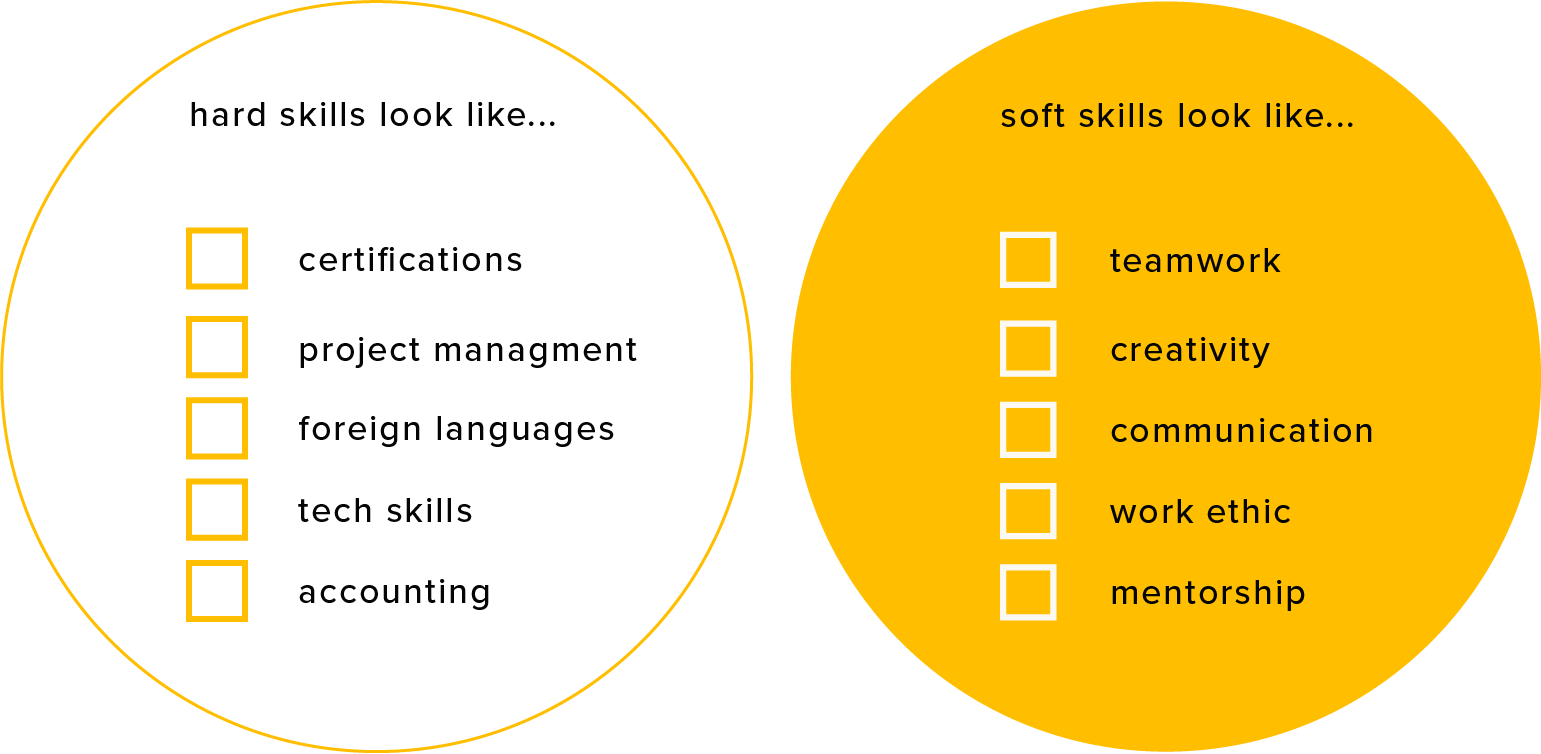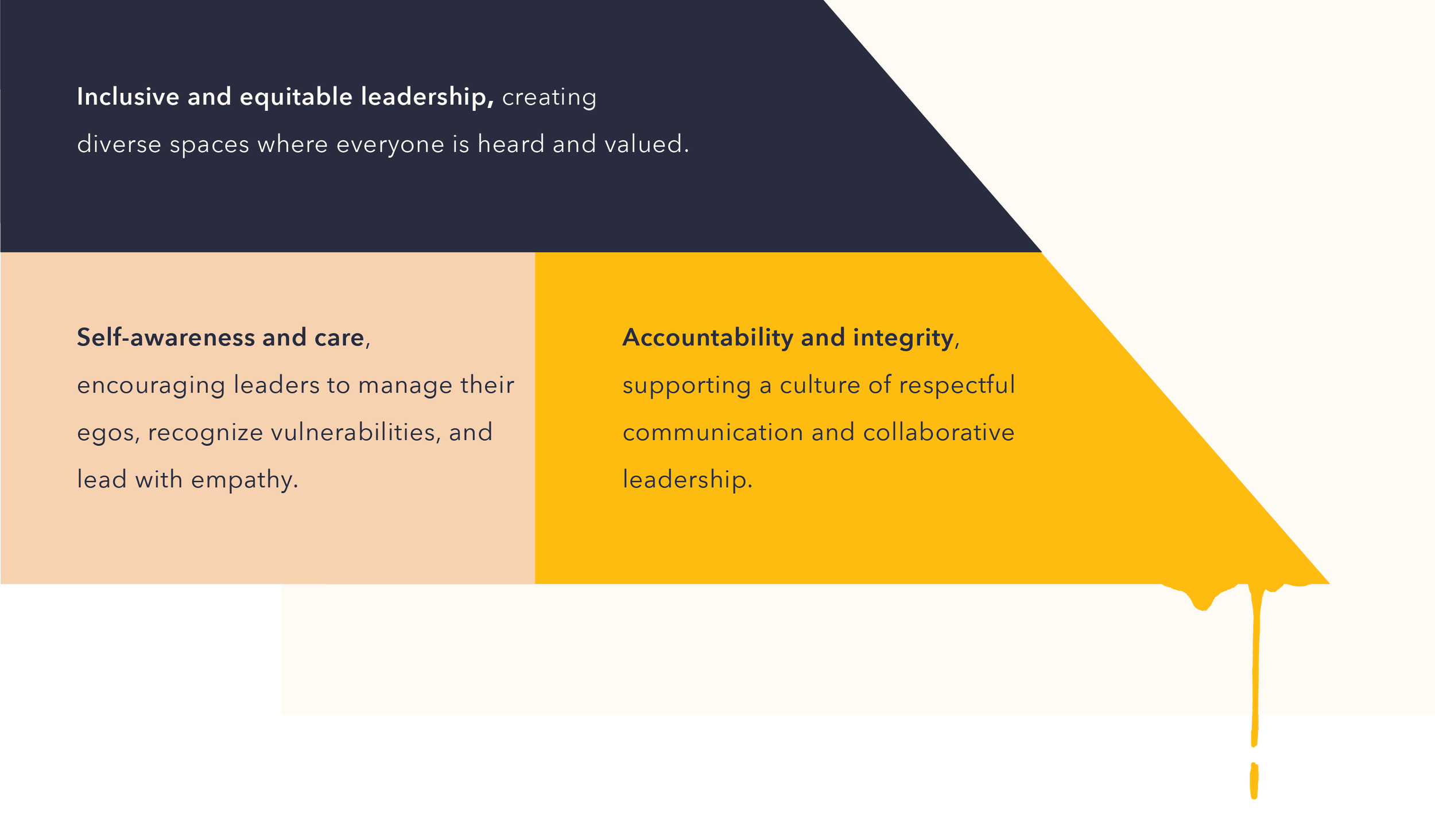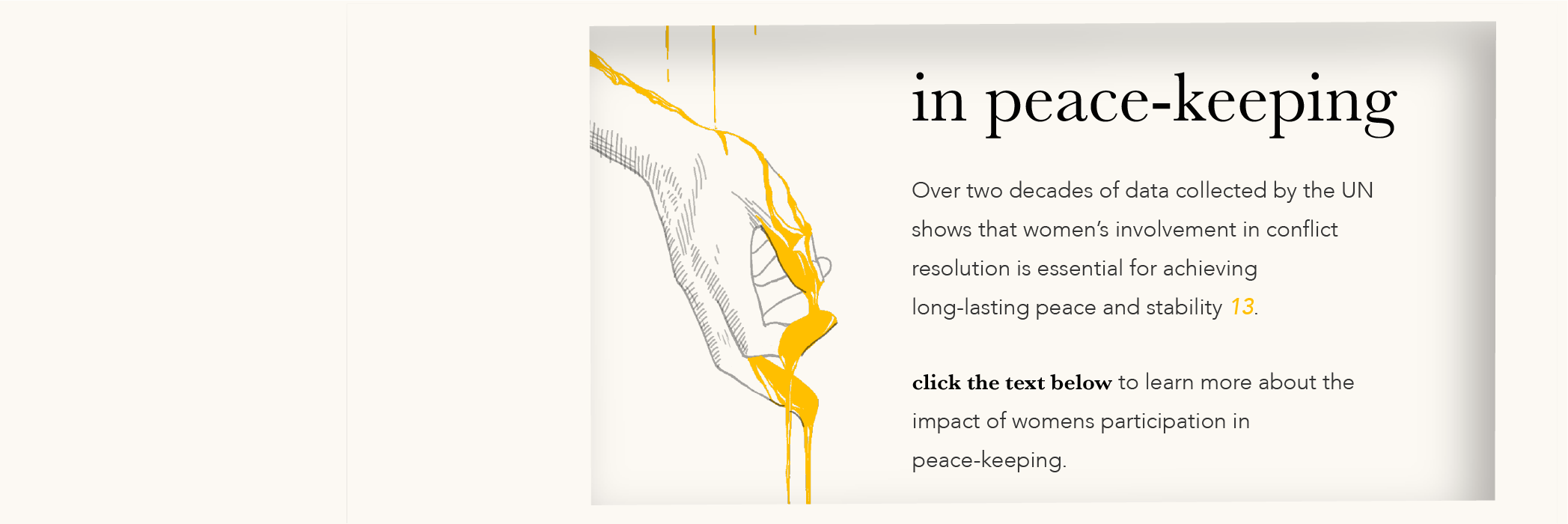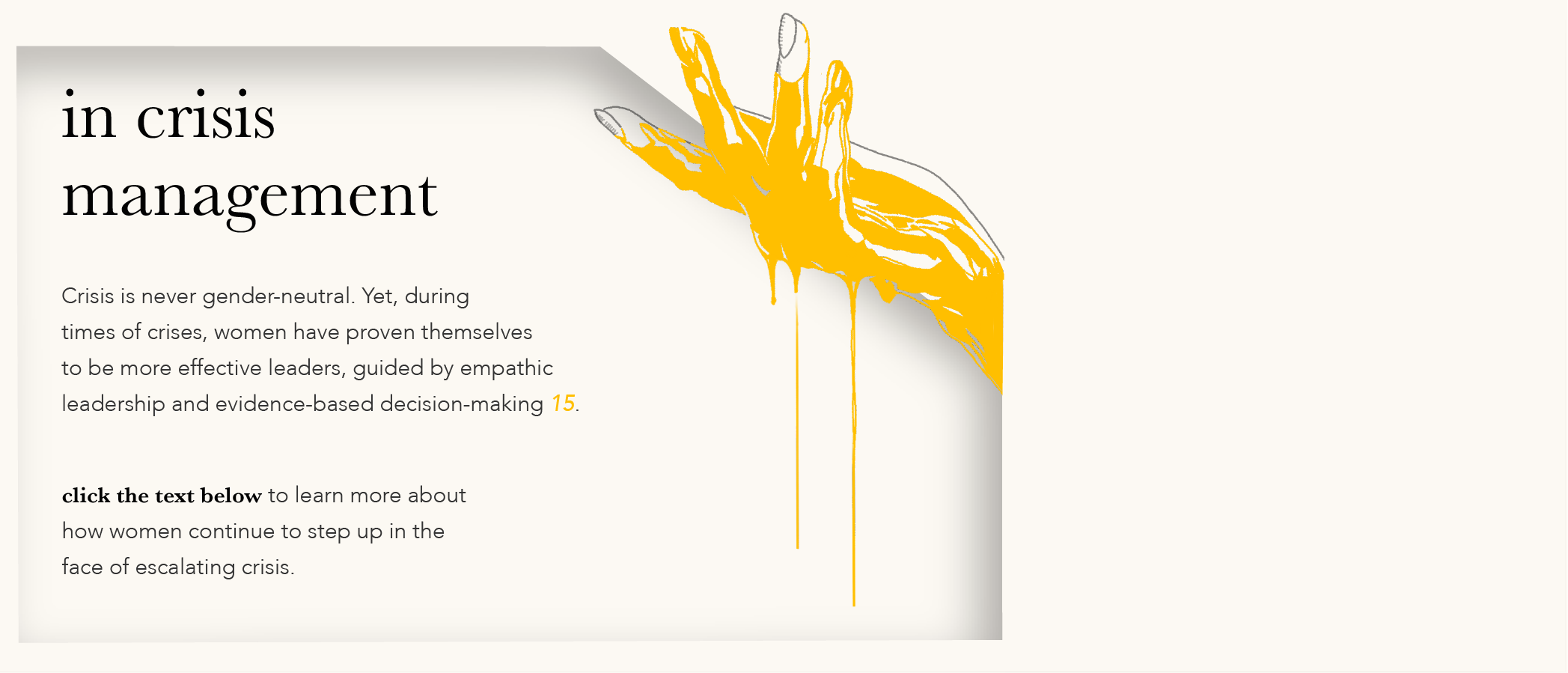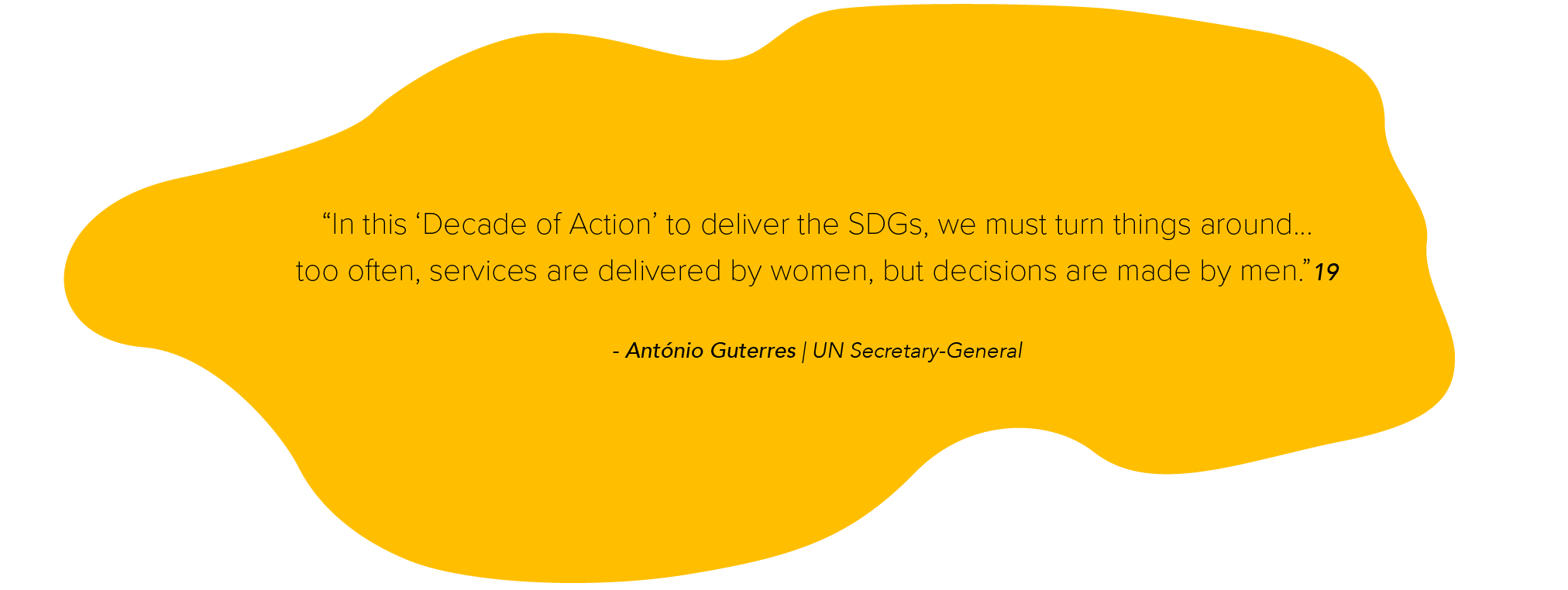This site is optimized for experiencing on desktop and larger tablets. Thanks for your understanding!
REDEFINING
LEADERSHIP
Exploring the future of leadership through a feminist lens.
published March 2025 | Sarah Emery Clark
This year, close to half of the world’s population will be electing new leadership1. In a landscape of geopolitical, environmental and economic strife, examining power imbalance is crucial.
While the UN's Sustainable Development Goals (SDGs) call for gender balanced leadership by 2030, the root causes of imbalance remain largely unaddressed.
Research shows that leaders who embrace feminist leadership values such as collaboration and empathy create thriving organizations and nations 2. So why are we not demanding more of these values from our leadership, regardless of gender?
Building a world where everyone’s rights and wellbeing are respected is more than a numbers game. To thrive, how we perceive and practice leadership needs to be redefined through a feminist lens.
In the words of bell hooks…
feminist leadership is for everybody.
click on yellow arrows in accordion menus for linked citations
explore
First, we'll look at data and case studies that illuminate how values affect leadership. We’ll learn about feminist leadership and why it matters, exploring the challenges women* face and the opportunities that arise from adversity.
participate
Participate in The Leaderboard citizen science project for a collective exploration of leadership structures. Together, we’ll examine different ways of leading, mapping a new model for leadership.
*while this publication draws on data and research done in a binary framework, there are many ways the word ‘woman’ can be inhabited.
1
Gender and leadership | what does the data tell us?
When we examine what qualities are valued in leadership in both public and private sectors we discover that soft skills are crucial, especially in times of crisis.
There’s more to leadership than dominance and assertiveness. Qualities that demonstrate emotional capacity and inspire harmony are essential components of effective leadership. Studies done by the Harvard Business Review show that women in leadership roles perform better than their male counterparts, especially in a crisis. This is so common that it even has a name: The Glass Cliff 3, where women are put in charge of fixing organizations on the brink of failure
Gender balance quotas alone won’t shift the leadership paradigm if all genders are expected to assimilate into male roles 4. Instead, let’s examine how women’s strengths might redefine what leadership looks like.
Women outscore men in most leadership competencies.
In 2019 the Harvard Business Review ran a private sector leadership assessment study that found women to be rated significantly higher than men in leadership skills. The study looked at the competencies that direct reports ranked as most important. Notably, respondents placed greater importance on interpersonal skills, including taking initiative, acting with resilience, and displaying high integrity, all of which women rated higher on.
After analyzing thousands of assessments, women were rated higher than men in 84% of the measured competencies. This leadership competency gap widened when a similar study was performed during the pandemic, suggesting that women perform better in a crisis 5.
“only 6% of publicly listed companies globally are run by women despite companies with female leadership outperforming the market average.”
Grace O’Brien | co-founder, Pink Chip 6
-
3 | Harvard Business Review | Research: Women Are Better Leaders During a Crisis | December 2020
4 | Forbes | Moving Targets – Why Quotas Alone Can’t Achieve
5 | Harvard Business Review | Research: Women Are Better Leaders During a Crisis | December 2020
6 | Forbes | Pink Chip Is Changing The Business World With Data On Women Leadership | March, 2024
2
Here’s where we are now...
private sector leadership
Only 19% of global corporate CEOs are women...
...in spite of firms with female CEOs and CFOs consistently producing superior stock price performance compared to the market average.
Recent years have seen a notable drop in the percentage of female CEOs. At large corporations these numbers dropped from 28% to 19% between 2022 and 2023. When asked about their reasons for leaving CEO roles, women cited public pressure, care-giving responsibilities and that they felt pressure to behave more like men 7.
public sector leadership
Only 22% of speakers of parliament are women...
...in spite of women in political leadership having positive effects on economics, peacekeeping and crisis management.
Global response to crises shows that countries with gender balanced politics fare better than those without. So why is political representation still lagging far behind women’s representation in the wider workplace? Globally, women cite gender based violence, harassment and non-inclusive infrastructures as barriers to participating 8.
This leaves a lot of room for improvement.
3
What is feminist leadership, and why does it matter?
Feminist Leadership is a process of transforming ourselves, organizations, and the world to advance a vision of social justice and equality. It's about dismantling discriminatory power structures, and building a world where everyone's rights and wellbeing are respected.
Feminist Leadership is based on three key principles:
True strength lies in uplifting and empowering others.
the impact of feminist leadership
-
9 | Oliver Wyman Forum | Representation Matters: Women Political Leaders | 2024
10 | World Economic Forum | Countries with more women in government are more prosperous | 2023
11 | World Bank Group | Women, BusIness and the Law Data | 2024
12 | Missing Perspectives | Boosting women on boards and leadership helps reduce gender pay gaps | 2024
14 | PBS | What You Need To Know About Women and Peacekeeping | 2019
15 | SDG Action | Getting More Women in Politics | March 2023
17 | UN Women | Women-led organizations are heroes of the humanitarian work in Sudan | 2024
19 | United Nations | Lack of women in key decision-making ‘should not be allowed | 2021
4
Sustainable Development Goal 16.7 | Inclusive Leadership
Promoting peaceful and inclusive societies for sustainable development, providing access to justice for all and building effective, accountable and inclusive institutions at all levels.
Target 16.7
Ensuring responsive, inclusive, participatory and representative decision-making at all levels.
Mapping women’s global political participation
The link between gender balanced, skills based leadership and successful humanitarian outcomes is clear 20. Many of the UN’s Sustainable Development Goals depend on these positive outcomes.
To better understand where we’re going let’s take a look at where we are now.
While the UN cites women in leadership as a path towards improved political judgement, their data shows that women are underrepresented in decision-making worldwide. We have a long way to go to reach gender parity 21.
-
21 | UN Women | Facts and figures: Women’s leadership and political participation | 2023
22 | United Nations | Lack of women in key decision-making ‘should not be allowed | 2021
5
Barriers to Inclusion
It’s a sticky problem
and it’s not just institutional...
...it’s cultural. Even in countries with protocols in place to ensure inclusivity in politics, women are still under-represented. Studies show that this is a cultural problem that correlates to a complex cycle of underrepresentation and ongoing discrimination.”
“rather than emulating male leaders, it’s crucial that women see female role models succeeding on their terms…without apology. ”
- Margie Warrell | Ph.D 23
Click on the case study drop downs to learn more about the barriers to women’s leadership.
44.4% of surveyed female parliamentarians received threats of death, rape, or abduction during their term of office.
Women in power often have to choose between being seen as likeable but incompetent, or competent but cold.
Most Americans agree that women candidates have to work harder than men to prove themselves.
Research shows that female students are more likely to choose a STEM (science, technology, engineering, or math) major when they have a female professor.
In a culture where subtle slights are overlooked, micro-aggressions continue to erode women's pipeline to leadership.
The solution to gender bias lies in re-imagining what leadership itself looks like.
-
23 | Forbes | Seeing Is Believing: Female Role Models Inspire Girls To Think Bigger | 2020
24 | SDG Action | Getting more women in politics | 2023
27 | Pew Research | Women and Political Leadership Ahead of the 2024 Election | 2024
28 | Forbes | Seeing Is Believing: Female Role Models Inspire Girls To Think Bigger | 2020
29 | MIT | The Gender Gap in STEM: Still Gaping in 2023 | 2023
31 | Forbes | Seeing Is Believing: Female Role Models Inspire Girls To Think Bigger | 2020
32 | Harvard Business Review | Women Rising: The Unseen Barriers | 2013
33 | NYU | The Impact of Stereotypes on Girls’ Career Choices | 2022
34 | McKinsey & Company | Women in the Workplace 2024: The 10th-anniversary report | 2024
35 | Harvard Business Review | Women Rising: The Unseen Barriers | 2013
6
Citizen science | the shape of leadership
Imagine yourself as a leader!
You don’t have to be a powerful politician or the CEO of a company to be a leader. You might be a teacher, a community organizer, a teammate, or a student. The best leaders are always learning, growing, and listening. What kind of a leader are you?
Participate in the project to find out!
Acknowledgments & Citations
This self-directed project began as an exploration of the SDGs with the team at infogr8 as part of their Future Fridays programming.
This work necessitates a deeper acknowledgement to the Pentlatch, E’iksan, Sahtloot and Sasitla First Peoples, who for millennia have passed on their culture, history, and traditions from one generation to the next on this ancestral, unceded territory I call home. I encourage all participants to challenge the notion of leadership not only through the lens of gender but though that of colonialism. I’ll ask that we keep reconciliation in mind as we reimagine leadership.



